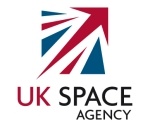UK space projects get £6m government award

The government has selected four projects to share in £6m for UK space research, with the companies themselves contributing almost a further £6m.

Four space projects will get £6m in funding from the UK government. Image credit: UK Space Agency
Minister for Universities and Science David Willetts said in a statement: "The UK space industry supports thousands of high-tech jobs in the UK and is an important driver of economic growth. This £6m investment will build on that success by helping some of the most innovative British businesses develop highly commercial, cutting-edge space technology that will be in demand in a growing global market."
The four projects, which involve 21 partners in total, including major defence contractors, universities, research organisations and seven SMEs, cover Earth sensing, communication, satellite design, and radar.
One of the major winners, submitted by a consortium headed by Astrium Ltd, will focus on initial design work for the Next Generation Platform for European telecom satellites, intended to create more efficient mechanical architectures for spacecraft in the three to six-tonne range.
Another is LYNX, a suitcase-sized broadband satellite terminal in the Ka-band (26.5 to 40GHz) that combines satellite access with 3G picocell capabilities, potentially creating tiny mobile networks very quickly in any area with a view of the sky. LYNX is headed by Avanti Communications Ltd, in partnership with Alcatel Lucent Telecom Ltd and three smaller companies.
The other two projects are for monitoring carbon distribution and changes on land, led by DMC International Imaging Ltd, and for an S-band (2 to 4GHz) space-based synthetic aperture radar, which has the potential to be low cost yet very high performance. This consortium is led by Surrey Satellite Technology Ltd.